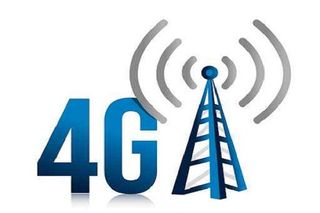Double or drop: is faster 4G the answer?
Faster speeds alone won't be enough to tempt business users to switch to 4G.

Inside the Enterprise: According to mobile network operator EE some of its subscribers could soon enjoy data download speeds of up to 150Mbps. And this is not over fibre, but its 4G mobile network.
Even under less ideal conditions, EE says it is able to double speeds, to between 24 and 30 Mbps. These are still speeds that are twice as fast as a good, fixed broadband connection and way in excess of what anyone outside a lab could have envisaged just a few years ago.
This will certainly give a boost to mobile workers using complex business applications, or anyone who needs to move larger files around when they are on the move.
IT directors may be reluctant to roll out 4G devices, let alone deploy services that depend on 4G connections, until LTE coverage is close to universal, at least in urban areas.
EE points to HD video sharing as one driver for faster networks, but there are plenty of other areas where there is demand for nippier data transfer rates. Nikon's D800 camera, for example, happily creates 36MB files just for stills.
Even camera phone images are heading into the 10MB plus territory. There are plenty of business reasons for taking high-resolution images and there are plenty of business reasons for moving large volumes of data around, in order to perform real-time analytics.
But so far, take up of 4G has not been all that rapid. EE claims about 500,000 users on 4G, but that is still a fraction of the company's 13.7 million subscriber base, which also includes its Orange and T-Mobile brands.
Cost is certainly an issue. As the first mover in the market, EE had the chance to charge a premium, and this, combined with the need for subscribers to buy new phones, has held adoption back.
Get the ITPro. daily newsletter
Receive our latest news, industry updates, featured resources and more. Sign up today to receive our FREE report on AI cyber crime & security - newly updated for 2024.
But for business users, a greater barrier may well be that they are tied into, or are loyal to, other operators. Orange and T-Mobile subscribers can move to EE on favourable terms, but O2, 3, or Vodafone users would have to buy themselves out of their contracts. Many, clearly, prefer to bide their time, until their own networks roll out 4G.
The move to faster networks will happen though, not least because the 3G networks are increasingly congested. It is actually in the operators' interests to move heavy data users from 3G where many, especially SME and corporate users have unlimited data allowances. The "spectrum efficiency" of 4G's LTE technology over 3G's UMTS should reduce the operators' costs per megabyte.
The other issue, though, remains coverage. IT directors may be reluctant to roll out 4G devices, let alone deploy services that depend on 4G connections, until LTE coverage is close to universal, at least in urban areas.
And, until Vodafone, O2 and 3 switch on 4G, we won't really know how well the networks handle a handover from 4G to 3G coverage. This might not matter too much for email, or even watching YouTube videos, but it really does matter for data-hungry enterprise applications.
That, though, is also a good argument for testing applications on 4G, and with network coverage expanding, now is probably a good time to invest in some 4G kit, and hit the road. Who knows, the sun might even shine too
Stephen Pritchard is a contributing editor at IT Pro.




